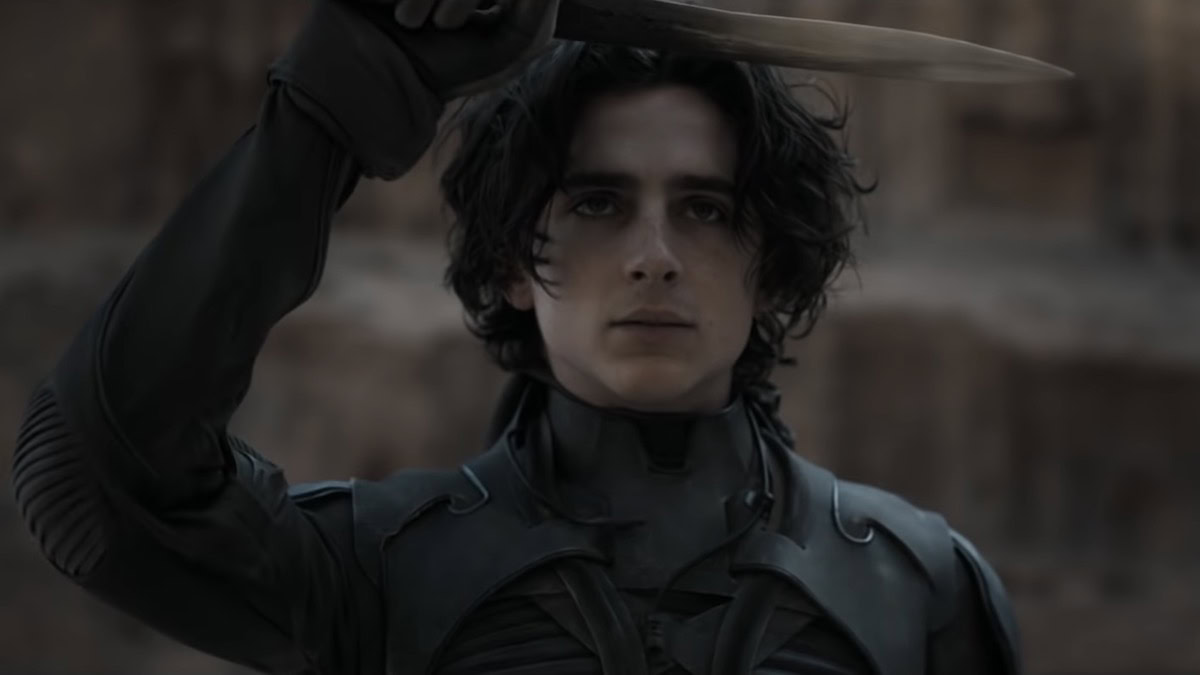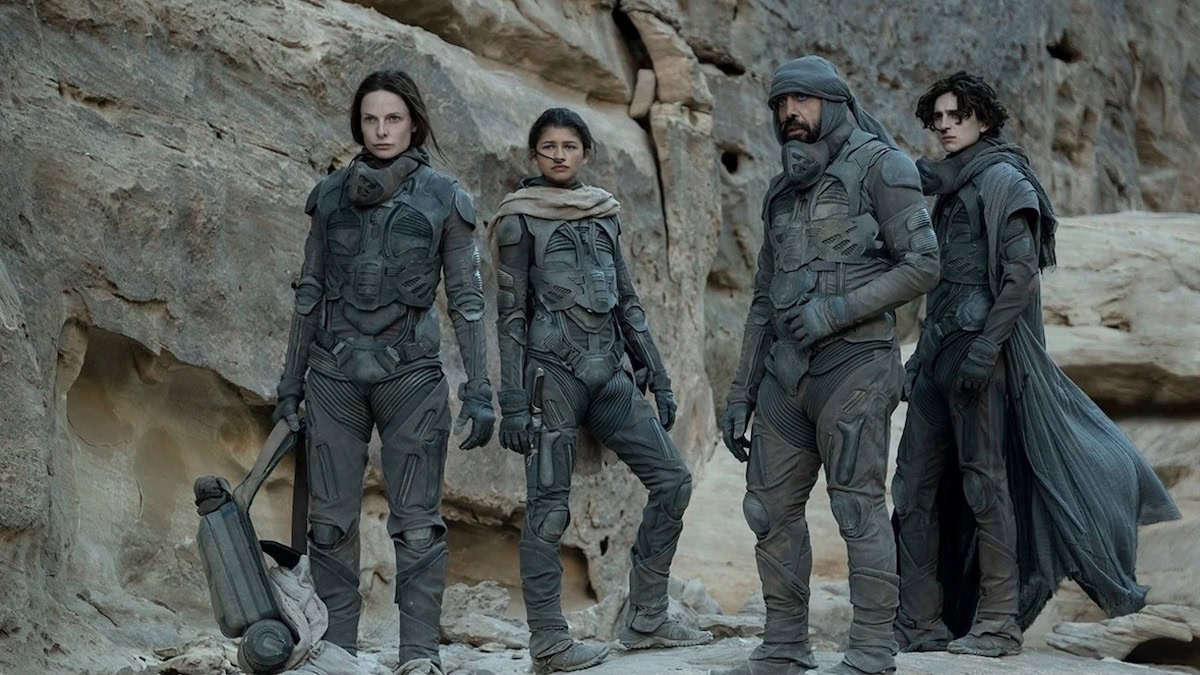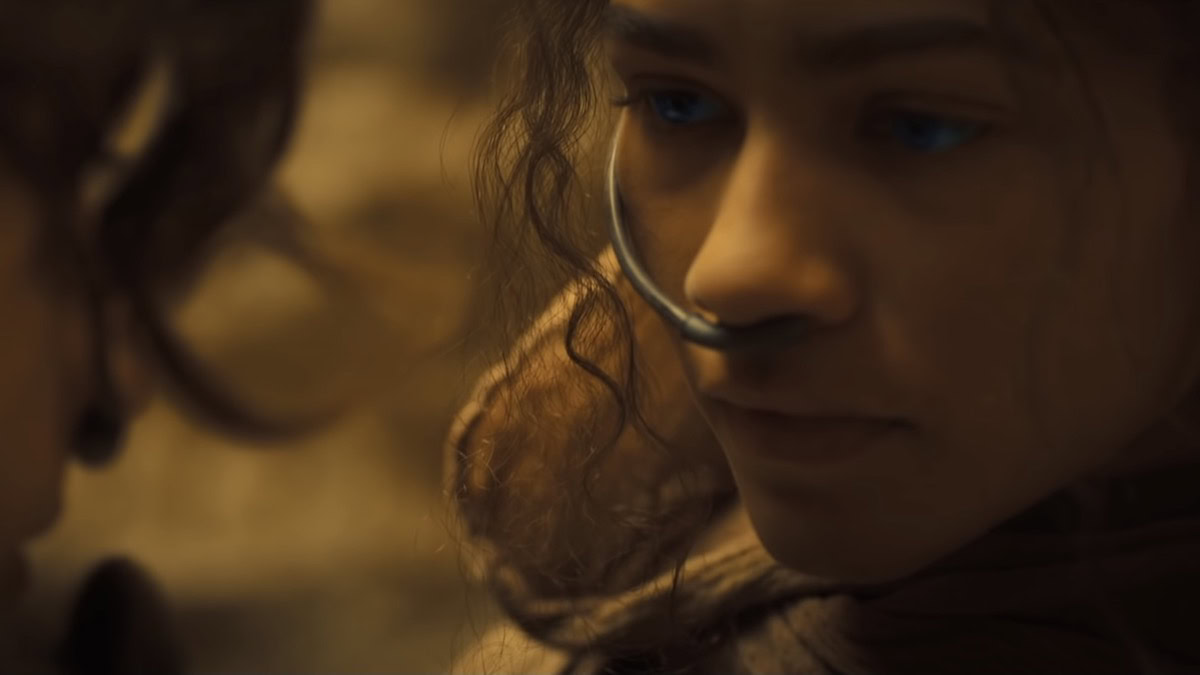Affiliate links on Android Authority may earn us a commission. Learn more.
Dune review: Denis Villeneuve's vision is big on spectacle
The long-awaited Dune is finally here.
Denis Villeneuve brings his distinctly grandiose style to a classic that has been begging for a big-screen adaptation in the age of blockbuster franchises. And he makes the final product stand out in a big way.
Dune: Part One hits theatres on October 21, and you can stream it on HBO Max in the US on the same day from 6PM ET. Dune: Part Two and an HBO Max original series, Dune: Sisterhood are due out in 2023.
Read our Dune review below.
What is Dune?

Adapted from the first half of Frank Herbert’s beloved sci-fi classic, Dune: Part One is a big-budget space opera.
The story follows the young Paul Atreides as he relocates with his family from his ancestral planet Caladan to the desert planet Arrakis. His father, a duke, has been assigned to oversee the planet by the ruling Empire. Arrakis is where “spice” — a rare and extremely valuable substance used for space travel — is harvested.
See also: Everything you can watch on HBO Max
But upon arrival, it’s clear the Atreides family is a target, most notably of the rival Harkonnen family who want to control the spice and the native population of Arrakis, the Fremen. All the while, Paul is training to master the powers passed down by his mother, a member of the Bene Gesserit, a typically female sect known to many as witches. Paul may be the prophesied Kwisatz Haderach, a powerful messiah, who could be instrumental in the upcoming conflicts on Arrakis.
Dune is chock full of major stars too. Timothée Chalamet plays Paul, and he’s joined by Zendaya, Rebecca Ferguson, Oscar Isaac, Josh Brolin, Stellan Skarsgård, Dave Bautista, Stephen McKinley Henderson, Charlotte Rampling, Jason Momoa, Javier Bardem, and more.
New aesthetics made new again

The 2013 documentary Jodorowsky’s Dune lays out the “making of” a Dune adaptation that never actually materialized. The cult auteur Alejandro Jodorowsky’s take on the source material attracted immense talent, and some initial financial backing, but as its aspirations grew, so did pushback. The project eventually fizzled out.
Check out: The best sci-fi movies on Netflix
What was left, however, was a huge legacy of creative work that made its way into other projects. Jodorowsky’s Dune has its fingerprints on everything from Star Wars to Alien to Raiders of the Lost Ark to Blade Runner to The Terminator and so many more. Even David Lynch’s own largely reviled 1984 adaptation of Dune has traces of it.
It’s fascinating to watch Denis Villeneuve draw very directly from those aesthetics, blending concepts and visuals from both the non-existent Dune and the many films it did inspire. I’m sure someone will eventually edit together a string of inspirations for Villeneuve’s vision, but for now, it’s incredibly rewarding to tease apart the look of the world onscreen and why it’s so familiar.
A massive feat of world-building

That aesthetic is broadly a grim one. We see distinctly fascist architecture. Ugly brutalist buildings made of concrete populate all of the Imperial worlds. Grotesquely organic-looking machinery also peppers the landscape. And all of that is juxtaposed with gorgeous nature shots, with vast oceans of water, sand, and stars filling the screen. It’s all mesmerizing and verging on sublime.
Related: Watch Speed Racer on HBO Max
And that’s the bulk of the film’s appeal, really. It’s world-building writ large. There’s a narrative, of course, and characters. But the political intrigue is relatively convoluted. We get bits and pieces of it, often incomplete and drowned out by the majesty of the natural world constantly threatening to eat up the nasty human world — in the case of the giant sandworms of Arrakis, quite literally.
Dune compels us to suspend our disbelief and become immersed in its universe.
Dune is big in every sense. It’s event viewing and doesn’t shy away from the bizarreness of its source material, from the repugnant Harkonnen clan to the recycling of sweat and spit to cryptic visions of a coming messiah.
Dune review: The verdict

As with his previous film Blade Runner 2049, Villeneuve takes a “more is more” approach here, and that means the scale of this thing is truly epic in the classical sense of the word. But it also means the pacing can feel a bit chaotic, rushing through exposition one minute and then just casually hanging out on some sand dunes the next to soak in the beauty.
This suits the world-building elements, no doubt. I feel like I could actually visit the planets Arrakis and Caladan. But more, I can believe that they are part of a much bigger, inhabited galaxy without seeing it. These places exist. Their people are real. The resources they fight over are indeed precious and finite.
This is the great gift of Dune. It compels us to suspend our disbelief and become immersed in its universe. The Imax screen I saw it on surely didn’t hurt. But I have no doubt Villeneuve’s efforts will still pay off on HBO Max.
Read: What is HBO Max?
Of course, by splitting the film in two, Villeneuve is also denying us a great deal of narrative resolution. It would be nice for Dune to feel a little more complete on its own. Villeneuve picks a smart point to end on, but we’re watching the pieces being put in place on the game board without actually seeing a whole lot of gameplay. World-building only goes so far, and at the end of the day, this is effectively the first half of a movie.
Maybe none of that matters though, as the film certainly left me wanting a Dune: Part Two. Hopefully, Warner Bros. lets this story live on to its conclusion.